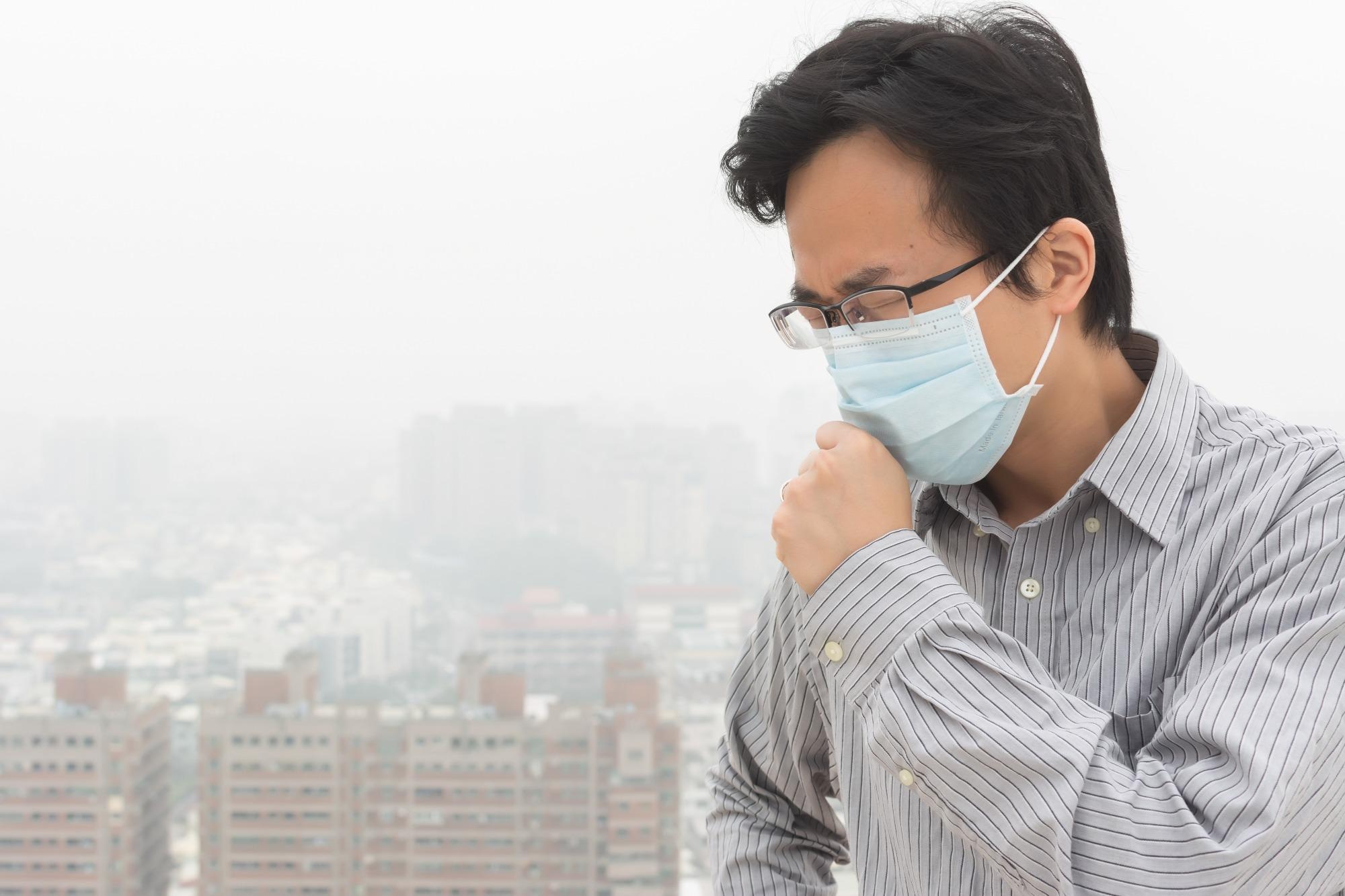Does exposure to air pollution increase the risk of infection with the severe acute respiratory syndrome coronavirus 2 (SARS-CoV-2) and severe coronavirus disease 2019 (COVID-19)?
 Study: Association of Short-term Air Pollution Exposure With SARS-CoV-2 Infection Among Young Adults in Sweden. Image Credit: Elwyn / Shutterstock
Study: Association of Short-term Air Pollution Exposure With SARS-CoV-2 Infection Among Young Adults in Sweden. Image Credit: Elwyn / Shutterstock
Air pollution and respiratory diseases
Air pollution can influence the incidence of respiratory infectious diseases like influenza and SARS. Data from an ecological study suggests a role of short-term air pollution exposure in SARS-CoV-2 infection. However, this study lacks individual-level exposure data. Moreover, ecological analyses can show apparent but invalid correlations between air pollution and COVID-19.
Air pollution can make an individual susceptible to an infection and may increase the chances of developing a severe disease by modifying the individual's immune defenses. The immune defenses can be altered via the upregulation of proteins critical to viral entry or by suppressing the immune system due to oxidative stress, epithelial damage, and inflammation in the lungs. Air pollution can also elevate the risk of comorbidities that may in turn, affect the risk of SARS-CoV-2 infection.
Time-stratified case-crossover study
Data for this observational study were obtained from BAMSE (Children, Allergy Milieu, Stockholm, Epidemiology [in Swedish]), a population-based birth cohort that includes 4089 newborns from 1994 to 1996, and from the Swedish national infectious disease registry that identified RT-PCR positive cases tested from May 5, 2020, to March 31, 2021.
Questionnaires were provided to the participants to collect data related to self-reported COVID-19–related respiratory symptoms.
Daily air pollutant levels at residential addresses were estimated using dispersion models with high spatiotemporal resolution. The pollutants included particulate matter with a diameter ≤2.5 μm (PM2.5), particulate matter with a diameter ≤10 μm (PM10), black carbon (BC), and nitrogen oxides (NOx). The daily air pollution exposure preceding the case and control dates as long as 7 days were assigned to the cases as the primary exposure.
A case-crossover study design was used for analyzing short-term exposures to acute events. Each case serves as its control at different periods. This controls for individual confounding factors slowly varying over time. The date of the PCR test was 'case day' and the dates with the same day of the week within the same calendar month and year were 'control days.'
Data from September 1 to December 31, 2021, was used for statistical analyses to estimate the association.
Associations between air pollution exposure and SARS-CoV-2 infection
A total of 425 participants tested SARS-CoV-2 positive within the BAMSE cohort from May 5, 2020, to March 31, 2021. The median age of the participants was 25.6 years. Of the 425 participants, 229 (53.9%) were women and 196 (46.1%) were men.
The distribution of daily air pollution exposure showed slightly higher median concentrations on the case days compared to those on control days (for PM2.5, 4.4 μg/m3 vs 3.8 μg/m3; for PM10, 7.7 μg/m3 vs 6.6 μg/m3; for BC, 0.3 μg/m3 vs 0.2 μg/m3; and for NOx, 8.2 μg/m3 vs 7.7 μg/m3). The concentrations of PM2.5, PM10, and BC were highly correlated and moderately correlated with NOx.
There were lag-specific associations between SARS-CoV-2 infection and short-term exposure to air pollution: lag 2 for PM10 and PM2.5 and lag 1 for BC. The risk of having a SARS-CoV-2 infection increased by 6.9% per inter-quartile range (IQR) increase in PM10 exposure, by 6.8% per IQR increase in PM2.5 exposure, and by 5.8% per IQR increase in BC exposure. There was no association between NOx exposure and SARS-CoV-2 infection. These associations were not affected by sex, smoking, having asthma, body weight, or self-reported COVID-19 respiratory symptoms.
Thus, increasing air pollution exposure was associated with an increased risk of SARS-CoV-2 infection, particularly for PM2.5, PM10, and BC levels.
Implications of the study
This is the first study reporting individual-level, short-term exposure to air pollution associated with SARS-CoV-2 infection among young adults. This study suggests a general association between acute air pollution exposure and SARS-CoV-2 infection.
This study speculates that increased levels of short-term air pollution may play a role in the manifestation of the disease symptoms for those who have been infected with SARS-CoV-2 rather than contributing to the transmission of the virus. Short-term exposure to air pollution can cause airway inflammation, oxidative stress, deep lung irritation, and immunomodulation of the host response to infection. These together may worsen the severity of an existing infection.
Limitations of the study
The analyses do not consider microclimate differences in exposure or time-activity patterns like time spent in traffic and indoors.
The predisposition factors were investigated in a relatively small group of participants with only mild to moderate disease. This may affect the results.
Conclusion
Residential short-term exposure to air pollution is associated with an increased risk of SARS-CoV-2 infection. This study supports the broad public health benefits of reducing air pollution levels.